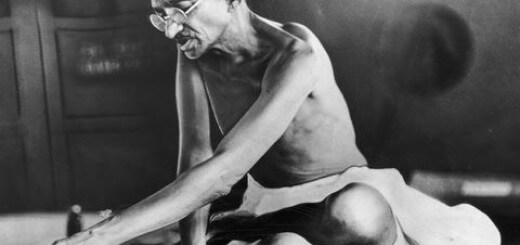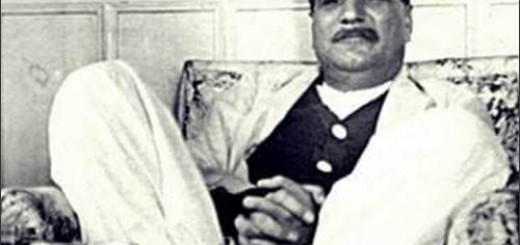The most tragic story of Aruna Shanbaug – By H. Nambiar
Aruna Shanbaug is one of the many gutsy girls who knew her worth and sought what she wanted. As an eighteen- year-old lass she left her village home in Haldipur in Shimoga, Karnataka, rebelling against her parents’ wishes, to become a nurse in the city of her dreams. Bombay. She was righteous, hardworking, sincere and perhaps therefore, a little sharp-tongued.
She landed a job as a nurse in one of Bombay’s biggest municipal hospitals the King Edward Memorial Hospital in Central Bombay’s Parel. Her natural gifts saw her earning her spurs soon; she was popular among the staff at the hospital. She won the heart of a young doctor, and the rebel she was, she was engaged to him despite her parent’s objections and in the face of his parents’ imminent disapproval. The engagement was a secret from his parents too.
Like most ambitious middle class girls she went about preparing for her home and hearth with the man she loved. She bought a mangalsutra for the marriage, a cupboard for the new home. But while she was making a mark, she made a deadly enemy in a wardboy named Sohanlal, for threatening to report his little crimes. And while she was breathless on the wings of her dream, this enemy moved towards her keeping to the shadows. On November 27, in the basement of the KEM hospital he moved for the kill. On November 27, 1973, Aruna was raped by Sohanlal, with a dog chain axphysating her, when she was changing from her nurse’s uniform to her saree after her shift.
The rapist was convicted for seven years in jail, and is believed to have started a new life in another hospital in New Delhi. But the victim, the 23-year old Aruna was sentenced to solitary confinement for life in a room of the same hospital. So traumatised, that her most obvious response was a terrified scream to anything male, even the sound of the male announcer on the transistor, in between songs she once loved. Not only that. Lying on a cot buttressed with the shattered pieces of her dreams of fulfilment, she can do nothing. Not even feel the edges of the splinters.
Aruna, in the parlance of physicians, is brain dead.
She is also “cortically blind,” meaning her eyes can see, but with the insensitivity of a camera lens; for her brain cannot register what she sees, and she cannot respond to it. That is not all, due to the dog chain that Sohanlal strangled her with, she seriously injured her brain stem. Result, she laughs or screams uncontrollably, and without reason. Her left elbow is flexed due to inactivity. So is her fist. She can only swallow food, making her weak and her skin is a parchment. And this condition has been so since that ill fated November evening in the basement of the KEM hospital.
Life has bypassed Aruna, who cannot even measure the changing seasons from her room in the KEM. Her lover, a devoted man, is now married and has grown up children. Her rapist is an employee in some hospital in New Delhi. The understanding dean of the hospital at the time of the incident Dr Deshpande is dead. So are many of the police officers of the Bhoiwada police station, where the case was first registered by a sub-inspector who became the complainant because no one would come forward to lodge a complaint.
Later, officers of the Crime Branch where the case was transferred following an unprecedented three day strike by the KEM nurses, took over the investigation. Aruna’s brother Balakrishna who was in the city working in the nearby Kamla Mills in central Bombay moved to hometown Shimoga and is unwilling to come to see his sister, citing cataract and diabetes, besides his age; 71. He however promised journalist Pinki Virani to come to cremate her. Virani’s response, “Don’t bother. If she needs a brother to cremate her, my husband will do the needful.”
Virani is the journalist who has pieced together Aruna’s heartrending story through sedulous research, unearthing bit by bit, the whole episode that took place 25 years ago and was customarily buried by the establishment, even as Aruna’s body cries out for a decent burial. As she says, with “maniacal passion, like a woman possessed,” she researched through the cavernous bowels of the old Victorian building that is the KEM, as also musty police stations for the files of the case. Tracking down the man who would have been Aruna’s husband but for the misfortune of their star-crossed love. Talking to Aruna’s family, barely surviving in grinding poverty, afraid that Aruna exhumed might mean additional responsibility for the family.
The fruit of her labour has been published by Penguin India as Aruna’s Story. And Penguin’s boss David Davidar has assured Virani that this would be the first book of the kind in Asia. Part of the royalty will go to Aruna. But, like Virani is the first to admit, that is going to make little difference to Aruna.
In her emaciated, vegetable form, lying contorted with a pain inflicted on her by a fiend 27-years ago, whenever a tormented scream escapes from Aruna’s body it contorts into a living question mark on our society. What went wrong in the mundane beauty of a simple woman’s life? How the tragic trajectory of her fate dodged so many of her well-meaning friends and well-wishers? How so many dutiful government servants, a loving, if uncomprehending family, a criminal justice system that failed to do justice to an innocent victim even when it punished a criminal, and a man who loved her but could not save her, went wrong.
The Aruna case was registered as a case of robbery and attempt to murder, but not rape. The reason; initial medical examination to conclude rape as the crime found that Aruna had no vaginal bruises and her hymen was intact. The truth; as Virani discovered, Aruna was menstruating on the day and therefore the rapist did not penetrate her. But she was raped anally. Subsequent medical reports prove that she bled for days together from the anus. But doctors at KEM did not bring it to the notice of the police.
At the heart of this seeming case of medical negligence or wilful concealment was the extremely humane consideration of the then Dean of KEM the late Dr Deshpande. In a fit of paternal concern for Aruna and her would be husband, his junior doctor, he did not want to visit the about-to-be-married couple with social ostracisation. He knew that Aruna’s case was almost hopeless, but if she did survive he wanted to save the couple the social price they would have to pay. He was hoping against hope that she would recover, and find her life once again.
Deshpande also persuaded Aruna’s distraught lover not to involve himself in the legal aspects of the case as a complainant, since the young doctor’s MD exam was about to begin. He persuaded him to concentrate on his exam and pray for Aruna. The young doctor was Aruna’s most devoted visitor and caretaker till April 30 1974, always by her bedside. On May 1, 1974 he got married, and since then never visited her.
The policemen who investigated her case were sure it was a rape case, and visited the hospital later to find medical corroboration, but were thwarted by Deshpande’s advice to the doctor who did not reveal the report of anal rape. They did their best in the circumstances, and got full terms for the two charges; robbery and attempt to murder. Seven years each.
As an officer confessed to Virani “Even if we had got the man to confess his crime, it would not be treated as evidence in the face of the medical report that said there was no vaginal rupture.” Sure enough, under the law anal rape would be under the act of unnatural intercourse, an act that is used mostly to persecute homosexuals.
Incidentally, the judgement against the rapist notes that the victim was menstruating and the accused had gone there with the intention to rape. And yet, ironically, the man who was convicted on both charges that he was tried for, and sentenced to for seven years on each of the charges, benefited from his position as “a first time offender”. The sentences ran concurrently, and he went scot-free after seven years to haunt another hospital’s dark basement. While a young life lies in traumatic limbo for half of the age of Independent India, with no hope of liberation even through death.
What got her aggressor the ridiculously low jail term was a thin gold necklace with a pendent, a wristwatch and some small denomination notes that he stole from Aruna’s bag. The total worth : Rs 500.
Aruna Shanbaug dies in Mumbai on 18th May 2015, after being in coma for 42 years. Even after 42 years, no justice has been served.













